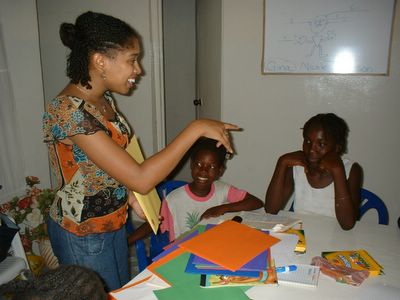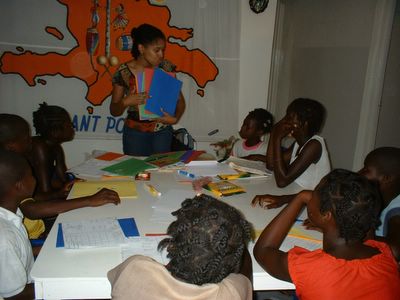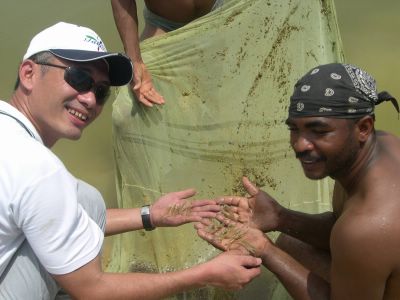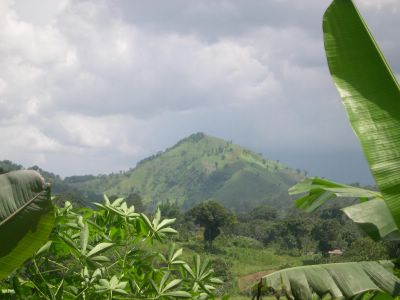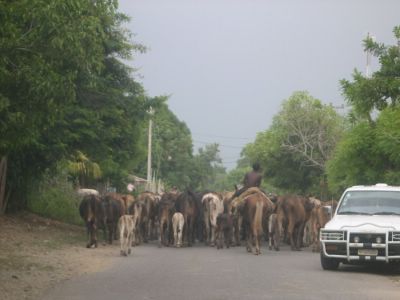My friend, Ikuko, sent me a review from a Dominicana who says this of my blog:
"I really like the article that your friend wrote about our country, I would like to receive them or read them. Do you know where can I get them? Maybe a website or something like that. Give congrats to her, she is a good writer." -- Noelia from Santo Domingo, DR
This blog is about the connections I make with people from different cultures through travel and other experiences.
Friday, September 30, 2005
Monday, September 19, 2005
Bachata: The Soundtrack of Life in the Dominican Republic
The Dominican Republic has captured my heart. I left there knowing that I was coming back. I would LOVE to buy a house or apartment and live there 30-50% of the year. The people, the culture, the music, the language, the food, everything was more than I expected and I didn't expect much. People were constantly mistaking me for a Dominicana. I figured that would happen since it happened to me in Miami sometimes. From the time I stepped off the plane in Puerto Plata I was "Dominicana," the immigration staff spoke to me in Spanish asking, "Dominicana?" I didn't mind it at all, I just wish that I had remembered more Spanish (I studied it over 10 years ago and have since studied Russian and Japanese) so that I could communicate better with the people there.
I went to visit my friend, Ikuko Shimizu, in the province of Dajabon (on the border of Haiti) where she coordinates various programs for the InterAmerican Development Bank (based in Washington, DC). I was so grateful that she invited me to come and visit. I learned so much about the work in international development and about the people that you actually affect when you work in the field. Ikuko told me that it makes such a difference being there than just sending money there. It solidified my interest in working in the field for international development. This experience has been one great cultural connection and real life work experience all rolled up in one. I could compare how similar African Americans (specifically Southerners) and Dominicans are. It blew me away how many similarities there were besides our hair and skin. It went beyond that. The way they prepared some foods, their hair, dressed, and even some mannerisms. It's hards to describe, but I felt right at home instantly.
The music that was most popular (in this order): Bachata, Merengue, typico (a high speed merengue beat), and Salsa. I heard music everywhere I went in the DR at all times of the day. People would blast bachata from their car stereos (much like African Americans like to do listening to R&B or hip-hop, etc), from their little portable radios and from little discotecs in the middle of the countryside ("el campo") even if there was no electricity, there was music. I have always loved bachata ever since I heard it in Miami as a teenager. Although I never knew how to dance to it. All of these types of music had a dance to it of course that would definitely go under the category of ballroom dancing (always with a partner). The easiest is merengue, which I had mastered in the clubs of Miami in high school. The next is typico, then there is bachata which involves more steps and most difficult to dance to is salsa. I picked up a bit of bachata dancing in the clubs while I was there, but I wasn't confident enough to try Salsa while tons of people were watching me on the dance floor. Salsa is hardcore and I think that I'd like to butcher the dance style in the privacy of my own home, thank you.
Chivelry isn't dead...in the Dominican Republic. The men of the DR are such gentlemen! If Ikuko and I were on our own in the club, then men would come over and ask why we were alone and without a man and would ask us to dance. After the dance, there were no expectations to get your number or harass you for a date later, it was just that, a dance, and their concern that you were having a good time. I noticed a few interesting things from Malco and his friend, who kept us company at the club. When they wanted to order something from the bar, they would clap their hands twice in the air and the waiter would come to get our drink orders. It was a small difference in culture, but it was an interesting observation. Also, when it was time for us to go home, they offered us a ride home (Ikuko knew Malco's cousin it turns out) to make sure that we were okay. I can go on and on about chivelry in the DR, but I'd be all day and I'm sure I wouldn't get to the bottom of the "macho" culture of the DR.
Oh, I'll stop typing and let you enjoy the pictures. If you'd like to hear more stories, I have tons from my one week stay there. Feel free to email me and let me know if you'd like to go for a vacation there, I'd love to be your guide!
I went to visit my friend, Ikuko Shimizu, in the province of Dajabon (on the border of Haiti) where she coordinates various programs for the InterAmerican Development Bank (based in Washington, DC). I was so grateful that she invited me to come and visit. I learned so much about the work in international development and about the people that you actually affect when you work in the field. Ikuko told me that it makes such a difference being there than just sending money there. It solidified my interest in working in the field for international development. This experience has been one great cultural connection and real life work experience all rolled up in one. I could compare how similar African Americans (specifically Southerners) and Dominicans are. It blew me away how many similarities there were besides our hair and skin. It went beyond that. The way they prepared some foods, their hair, dressed, and even some mannerisms. It's hards to describe, but I felt right at home instantly.
The music that was most popular (in this order): Bachata, Merengue, typico (a high speed merengue beat), and Salsa. I heard music everywhere I went in the DR at all times of the day. People would blast bachata from their car stereos (much like African Americans like to do listening to R&B or hip-hop, etc), from their little portable radios and from little discotecs in the middle of the countryside ("el campo") even if there was no electricity, there was music. I have always loved bachata ever since I heard it in Miami as a teenager. Although I never knew how to dance to it. All of these types of music had a dance to it of course that would definitely go under the category of ballroom dancing (always with a partner). The easiest is merengue, which I had mastered in the clubs of Miami in high school. The next is typico, then there is bachata which involves more steps and most difficult to dance to is salsa. I picked up a bit of bachata dancing in the clubs while I was there, but I wasn't confident enough to try Salsa while tons of people were watching me on the dance floor. Salsa is hardcore and I think that I'd like to butcher the dance style in the privacy of my own home, thank you.
Chivelry isn't dead...in the Dominican Republic. The men of the DR are such gentlemen! If Ikuko and I were on our own in the club, then men would come over and ask why we were alone and without a man and would ask us to dance. After the dance, there were no expectations to get your number or harass you for a date later, it was just that, a dance, and their concern that you were having a good time. I noticed a few interesting things from Malco and his friend, who kept us company at the club. When they wanted to order something from the bar, they would clap their hands twice in the air and the waiter would come to get our drink orders. It was a small difference in culture, but it was an interesting observation. Also, when it was time for us to go home, they offered us a ride home (Ikuko knew Malco's cousin it turns out) to make sure that we were okay. I can go on and on about chivelry in the DR, but I'd be all day and I'm sure I wouldn't get to the bottom of the "macho" culture of the DR.
Oh, I'll stop typing and let you enjoy the pictures. If you'd like to hear more stories, I have tons from my one week stay there. Feel free to email me and let me know if you'd like to go for a vacation there, I'd love to be your guide!
(from left) Altagracias, her granddaughter, Ruben and Flores. Flores did my hair while I was in Clavellina and then invited me to lunch with her family. I had the Dominican dish, "los crillo" (I bet I'm butchering the spelling and the name). It was muy bueno! Flores' family is what a typical Dominican family looks like, mixed white and black. That's why Dominicans are so many different shades, much like African Americans. 



While I was in Dajabon, Ikuko asked me to teach English to some of the Haitian kids that came to this center that she works with. It was such a great a experience. We didn't speak any of the same languages (they spoke Creole and some Spanish) and I spoke Japanese and English, but they learned some things. I taught them "Head, Shoulders, Knees and Toes." They must've loved it because as we followed them back across the border they were doing the gestures that go to the song and laughing. Ikuko said that that was the most that she'd seen the kids smile. I was happy to laugh with them. 
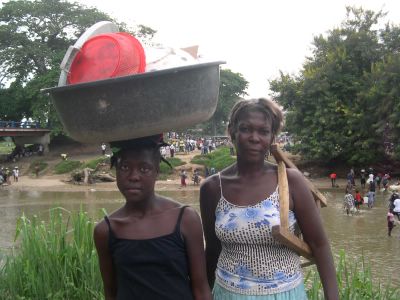


Manolo (mi tio), me, ChiCha (mi tia) and Juandi. I fell in love with this family! They were the best. As soon as she met me, she gave me the greatest hug and fed Ikuko and I. She thought that I was Dominican (as everyone I met thought) and called me a "Dominicana Americana." Before we ate this meal, she told us that she made the food with love "con amor." I cried after leaving her house the first time I met her. I never knew someone with such great energy and love. She adopted Juandi. Apparently he came to visit her once from Mao and cried to come back, so she she let him stay and enrolled him in school there. I'm coming back to visit them, mark my words. 
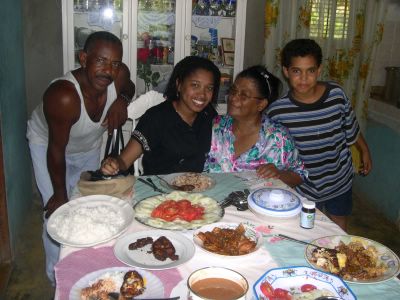


Ikuko, Morfi and I in the mountains after the Boshi-Techo workshops. The workshop's aim was to introduce the Boshi-Techo program created by Japan to Dominican mothers. The program was created to decrease infant mortality rates (which increased in Japan following WWII). Infant mortality is a huge problem in the province of Dajabon. The simple solution that Ikuko and the ministry of health (Morfi presents in the workshop) seek is to introduce these "History of my health" books to the mothers so that they can keep the records of their children's health. Something as simple as that can help doctors and parents in keeping up with the health of the children. 



Memorial to the Japanese that came to Dajabon after/during (? ) WWII. Ikuko says that the dictator of the DR placed them there in Dajabon close to the border of Haiti because he believed that if the Haitians (?) tried to attack, then the Japanese government would come and rescue them, making them a buffer between the Dominicans and the Haitians. I met one Japanese descendent in Dajabon, Yamanaka-san, who was an owner of a shop. 



This guy was taking the bus with us from Dajabon to Santiago. I thought that he looked different from the rest of us "Dominicans." Turns out he was a United Nations representative from Guinea monitoring the conditions in Dajabon and Haiti. He only spoke French and Ikuko spoke some French. His friend was from Haiti and could manage a bit of Spanish to speak to Ikuko. It's a small world. He showed us pictures of him in his U.N. uniform. So cool. 
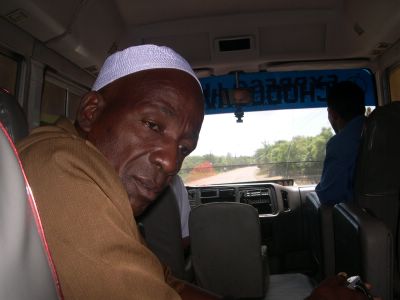


Subscribe to:
Posts (Atom)







